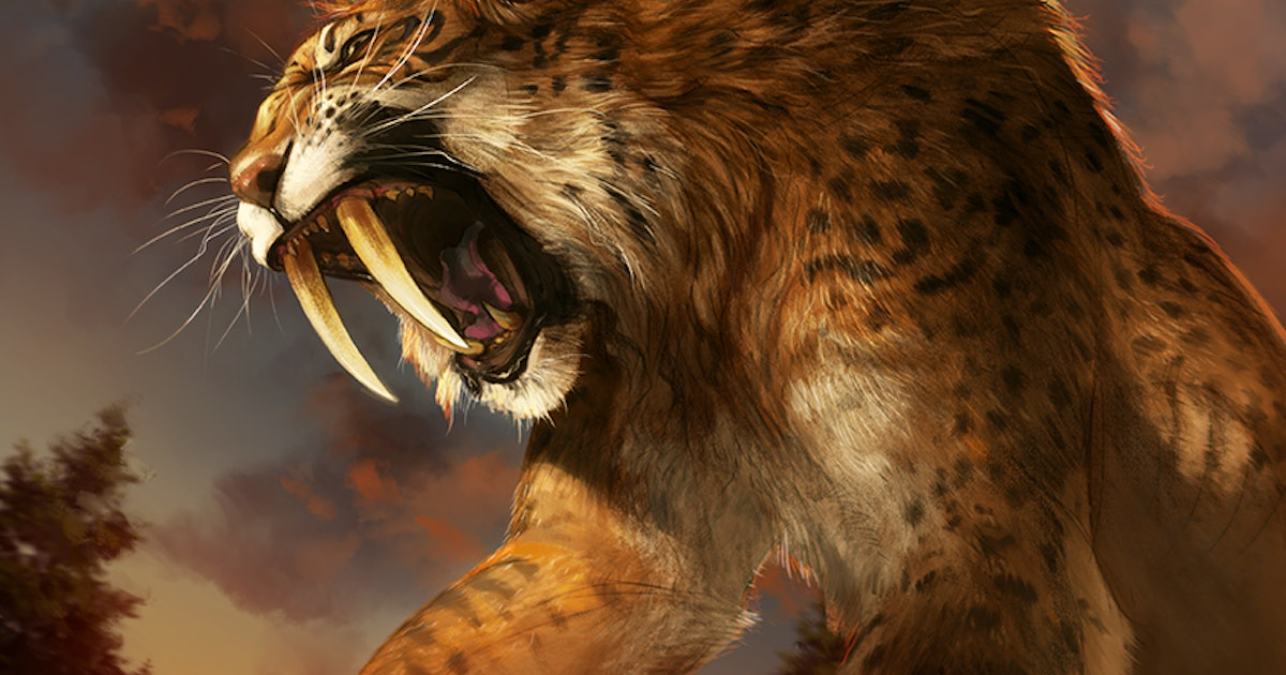Many people consider saber-toothed cats to be only second to the Tyrannosaurus rex when it comes to the most deadly predators in the history of the animal kingdom. They could reach a height of 4 feet (1.20 meters) and a weight of 880 pounds (400 kilograms), but what set them apart from other animals was the length of their canine teeth, which gave them a menacing appearance. But were the saber-toothed cats that lived during the Ice Age indeed efficient hunters, or were they simply harmless giants who subsisted mostly on carrion and other forms of waste meat? And what can animals like Smilodon, the best known saber-toothed cat, which had fangs that may be up to 3.3 feet (1 meter) and a half long, do with such long teeth?
Learning More About Saber-Toothed Cats
Speculations like this on the look and behavior of saber-toothed cats are partly supported by data gleaned from the discovery of fossils. Techniques for determining an animal’s age using current technology or computer simulations also give useful insights into these cats.
Scientists now understand that there were a great number of distinct species of saber-toothed cats that roamed the world throughout the last 15 million years. Around 10,000 years ago, as the last of the Ice Age’s glaciers melted, they became extinct as a species.
The Smilodon fatalis, which served as the inspiration for the character “Diego” in the Ice Age movie franchise, is the saber-toothed cat that is perhaps the most well-known today. The Smilodon is believed to be the archetype of a hazardous predator since it roamed the steppes of America. However, according to the findings of the researchers, the Smilodon’s jaws were easily strained from holding a heavily wiggling prey for an extended time. For instance, lions are capable of doing this with a death bite that lasts for 20 minutes.
If a Smilodon had bit down on prey that was battling for its life, it would have put itself in danger of catastrophic harm and probably even a cracked skull or teeth. This would have very likely been the end for the saber-toothed cat if it had been given a chance.
Horrendous Creatures
On the other hand, Smilodon was not a cute kitten but rather a dreadful beast. Because even if the saber-tooth cat wasn’t very good at biting, it made up for it in other ways more than adequately.
The creatures had an incredible amount of muscle and strength throughout their bodies, making them well suited for grappling and bringing massive prey to the ground. They were aided by strong front paws that had sharp claws that worked as a kind of grappling hook for them.
They made it easier for Smilodon to capture and overpower animals, even bison-sized, with their powerful jaws. Smilodons only used their massive canines as a last resort as a weapon. Then, in order to keep the victims at bay, the killing action was directed towards the prey’s neck.
Smilodon had an incredible advantage when it came to taking down small prey, but they were merciless and proficient hunters of large animals. On the other hand, a lion is a far better all-around performer than any other animal, including saber-toothed cats.
The issue of whether or not the information gleaned from Smilodon can be applied to all other saber-toothed cats remains unanswered. There were saber-toothed cat species that never even reached the size of an ocelot in their whole lifetime.
But why are Smilodon and its cousins referred to as “saber-toothed cats” instead of “saber-toothed tigers” today? This is because saber-toothed cats do not share any direct ancestry with modern tigers and instead belong to a distinct subfamily of cats.
Sources:
- The Saber-Toothed Cat’s True Secret: Its Super-Strong Arms. (n.d.). Discover Magazine.
- Magazine, S., & Katz, B. (n.d.). Were Saber-Toothed Cat Fangs Strong Enough to Puncture Bone? Smithsonian Magazine.
- Sabre-toothed cats had weak bites. (2009, September 21). National Geographic.




